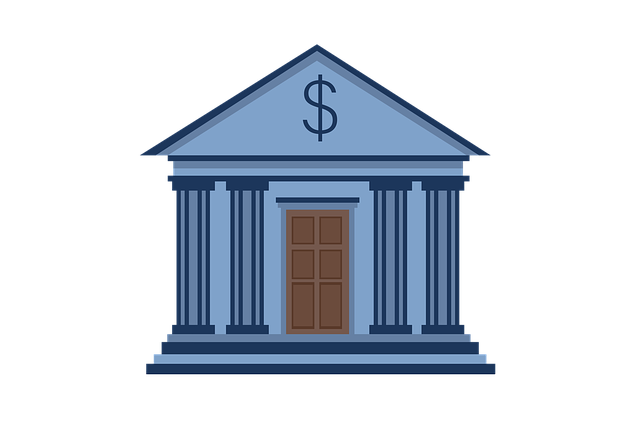When exploring loan options, understanding the variety available is crucial for informed choices. Different types like personal, mortgage, and commercial loans cater to distinct financial scenarios with unique terms, interest rates, and repayment conditions. Key considerations include interest rates and fees, loan terms and flexibility, collateral requirements, and comparing traditional banks/credit unions with alternative lenders. Weighing these factors enables individuals to select the best loan options aligned with their individual circumstances and financial goals.
When considering a loan, understanding your various loan options is crucial. From traditional bank loans to alternative lenders, each comes with its own set of pros and cons. This article guides you through key factors like interest rates, repayment terms, collateral requirements, and more. By the end, you’ll be equipped to make an informed decision on the best loan options for your financial needs, ensuring a secure and beneficial borrowing experience.
- Understanding Different Types of Loans
- Evaluating Interest Rates and Fees
- Loan Term and Repayment Flexibility
- Collateral Requirements and Risk Assessment
- Comparisons: Traditional Loans vs. Alternative Lenders
Understanding Different Types of Loans

When considering loan options, it’s crucial to understand the diverse types available to fit various financial needs. Each loan category comes with its own set of terms, interest rates, and repayment conditions, tailored to different scenarios. For instance, personal loans are unsecured and flexible, suitable for short-term needs like debt consolidation or unexpected expenses. On the other hand, mortgages are long-term, secured loans designed for purchasing real estate.
Business owners often opt for commercial loans to fund expansions or start-ups, with options including term loans, lines of credit, and SBA-backed loans, each offering unique benefits and requirements. Understanding these loan types empowers borrowers to make informed decisions, comparing pros and cons to select the most suitable financial instrument based on their circumstances.
Evaluating Interest Rates and Fees

When evaluating different loan options, one of the most crucial factors is interest rates and associated fees. These play a significant role in determining the overall cost of borrowing money. Each loan type, whether it’s a personal loan, mortgage, or student loan, comes with its own set of interest rate structures and charges. Understanding these dynamics is essential for making informed financial decisions.
Comparing interest rates allows borrowers to identify the most cost-effective loan option. Lower interest rates mean less money spent on interest over the life of the loan. Additionally, fees such as origination, processing, or prepayment penalties can add up and should be carefully considered. By meticulously reviewing these aspects, individuals can choose the best loan option that aligns with their financial goals while minimizing long-term expenses.
Loan Term and Repayment Flexibility

When exploring different loan options, one key factor to consider is the loan term and repayment flexibility. Loan terms typically range from short-term (a few months) to medium-term (1-5 years) and long-term (over 5 years). Each option comes with its advantages; shorter terms usually offer lower interest rates but require faster repayment, while longer terms provide more manageable monthly payments.
Repayment flexibility is another critical aspect. Some lenders offer fixed repayment plans, providing predictability but limiting options for adjusting payments to suit changing financial situations. In contrast, other loan options include variable or adjustable-rate plans, allowing borrowers to potentially reduce monthly costs during favorable interest rate periods. However, these may come with the risk of rising rates over time. Evaluating your financial goals and future prospects is essential in choosing a loan term and repayment structure that aligns best with your needs.
Collateral Requirements and Risk Assessment

When exploring different loan options, one critical factor is understanding the collateral requirements and risk assessment associated with each type. Traditional loans often demand tangible assets as security, such as real estate or vehicles, which serve as a safeguard for lenders in case of default. This practice provides borrowers with a clear path to acquiring funds but restricts access for those lacking substantial owned property.
In contrast, unsecured loans offer flexibility by eliminating the need for collateral. However, this comes with higher risk for lenders, typically resulting in stricter eligibility criteria and potentially higher interest rates. Borrowers should carefully consider their financial stability and ability to repay to navigate these loan options, weighing the benefits of immediate access against the increased vulnerability of both parties involved.
Comparisons: Traditional Loans vs. Alternative Lenders

When exploring various loan options, it’s crucial to compare traditional loans from banks or credit unions with alternative lenders. Traditional loans often require a strong credit history and offer fixed interest rates, making them a reliable choice for borrowers with good credit. These institutions typically have strict eligibility criteria and may take longer to process loans. On the other hand, alternative lenders, such as peer-to-peer (P2P) lending platforms or online banks, prioritize accessibility and speed. They often cater to a broader range of borrowers, including those with less-than-perfect credit, and provide quicker loan approvals and disbursements. However, alternative lenders may have higher interest rates and less transparent terms compared to traditional loans.
Borrowers should weigh these differences based on their financial situation and priorities. Traditional loans excel in stability and predictability, while alternative lenders offer convenience and faster access to funds. Understanding the specific pros and cons of each loan option empowers individuals to make informed decisions, ensuring they secure the most suitable financing for their needs within the diverse landscape of loan options available today.






